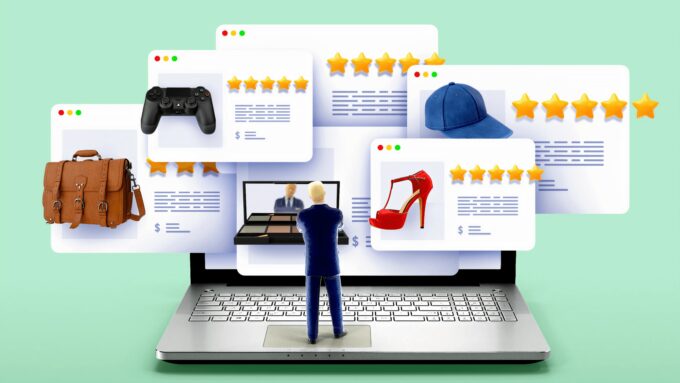+Building a site takes time that you might not have. Fortunately, there are some quick and easy ways to sell your digital good without having a website. Small companies frequently express to us that creating their own websites is difficult due to the expenditure and upkeep. To overcome this, we propose using alternative methods to sell items online without a website.
Today we are sharing with you three different ways to make online sales that don’t require setting up a website.
There are three methods for businesses to sell their items online without having a website; selling on internet marketplaces, via social media platforms, and through third-party retailers that already have websites. Simply create an account and provide a list of products for sale on the internet.
1. Sell on your blog or social media

Source: unsplash.com
This is the easiest method, you will only need to install one plugin and it’s free! Just set up a PayPal button like this . It even comes with statistics that show how many people bought what. If you want more features or if you would like an e-mail notification for each sale, take a look at this plugin (only $20). Other popular options are Gumroad ($10 monthly), Sellfy (25% of sales) and Selz (bundled payment system).
Another fantastic option to sell items online without a website is social media. There are presently two platforms that enable businesses to sell goods straight from their Facebook and Instagram accounts, among them being Pinterest. Others, such as Amazon, currently demand that merchants have an established online store before they may join the program.
The two methods for selling products on Facebook are:
- Selling directly through Facebook’s own eCommerce platform
- Using an ecommerce builder and connecting products to a Facebook store
Only businesses based in the United States may sell directly through Facebook. If you live outside of the United States, continue to the next method. Shop set-up is as simple as going to the page settings > Templates & Tabs and selecting “Add a new tab.” Then choose “Shop” from the bottom of the screen. Choose “Commerce Manager” from Facebook’s menu bar, then go through a step-by-step procedure for listing and selling items.
Setting up a Facebook store with an eCommerce builder takes longer since items are not immediately shown on Facebook. This is beneficial to merchants who decide to establish their own online store at a later date, as the products are already accessible.
We have chosen these platforms because they are both quite user-friendly and include a wide range of functionality. Shopify and BigCommerce are the two eCommerce builders we propose you consider for this purpose. After setting up a company Facebook page and posting items on these platforms, merchants can simply download an app to their business Facebook page. The products will be pulled through and made available to purchase right away via Facebook thanks to this approach.
According to PeachPay the only accounts that can sell on Instagram are accounts that have been approved. The six requirements in short are:
- The account must comply with commerce policies and the merchant agreement
- The account must be a business account
- The account must have a connected Facebook page
- The retailer must primarily sell physical goods
- The business account must be connected to a Facebook catalogue
There must be a presence in North America, Latin America, EMEA, and APAC.
The procedure is straightforward from there. Retailers simply have to go into their account’s settings and select “Business” and then “Shopping.” A list of catalogues will be generated that are linked to the Instagram account. Select the correct catalogue and hit finish.
2. eBay auctions

Source: fundera.com
As with selling on your own website, setting up an auction on eBay takes time that may not be available to you. If you really want to use eBay but don’t want the hassle of building an entire store just for it, you can use an eBay dropshipper . All you need to do is select what items you want to sell and they will handle the rest. Also, if the item sells, the dropshipper will ship it directly to your customer. If not, no problem! They will simply send you another one. There are many different dropshippers that sell on eBay , pick one that fits your needs!
3. Marketplaces

Source: mayple.com
Marketplaces are great for digital products because all you need to do is upload your files and they will be available for everyone. To begin selling online on marketplaces, companies must first select a platform. It’s preferable to start with well-known marketplaces like eBay and Amazon. Millions of people visit these sites each month looking for items to buy.
It’s simple to start advertising items on eBay. To begin, you’ll need an eBay seller account and a linked payment method. Simply pick a subscription plan and the subscription length after creating your store. E-commerce sellers can post products quickly and simply by naming their store. After that, eBay offers assistance in customizing the shop and stock management.
Amazon’s selling process is a little more complicated, but it’s worth the effort. The first step is to choose a selling plan that costs £25 per month and up. After that, merchants must create an account with seller central, Amazon’s back end of the business.
- This is where the Amazon selling process differs from that of eBay. Amazon offers consumers two methods to sell their items:
Simply uploading product information, condition, and shipping to sell items that are already listed on Amazon takes less than a day. EAN/SKUs must be created for items that aren’t yet on Amazon, as well as all of the component parameters separately for those that are. In some categories, products may need to pass Amazon’s review before going on sale. The store is now ready to launch once this has been completed.
Conclusion
Selling products online without a website is possible now more than ever. There are plenty of ways to sell products online without a website, including Facebook catalogues, eBay auctions, and marketplaces.







